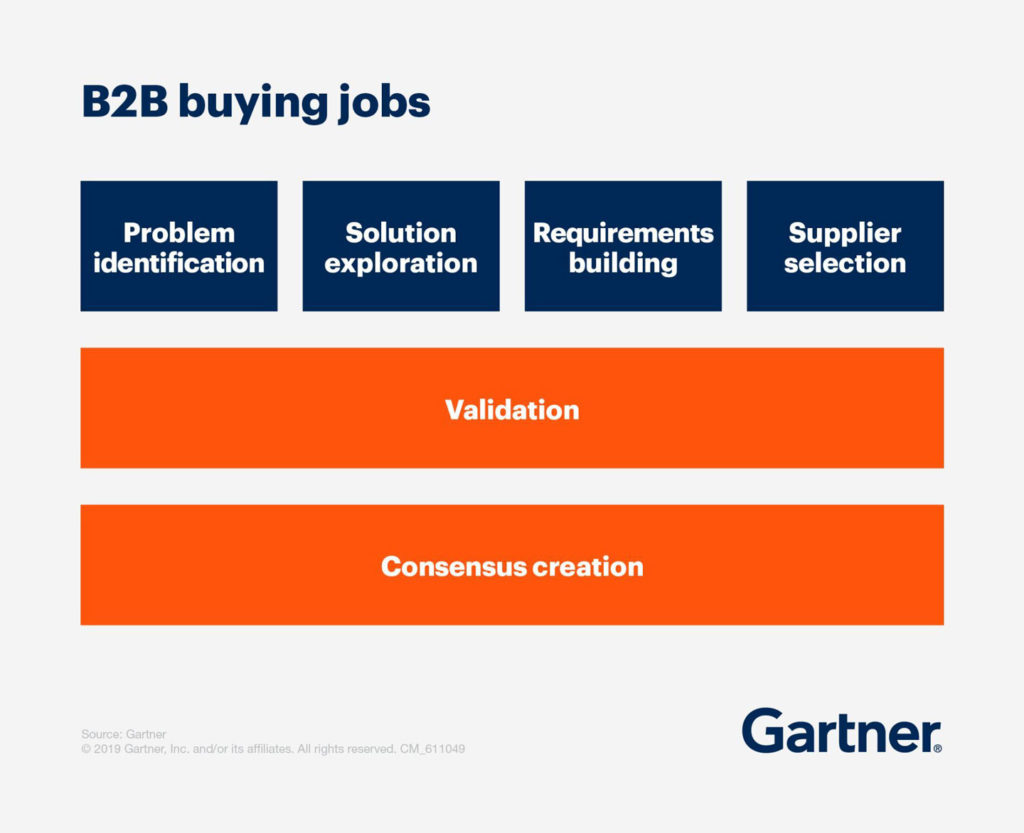Should your B2B content be behind a contact form or open to everyone? This is one of those questions to which there is not just one right answer that would always apply regardless of the situation. My personal opinion on this topic has changed completely since I started The F Company. Although lead magnets are a commonly used lead generation tactic and the intention is solid, the use of such gated content also has some pitfalls that may lead you astray from what’s actually important. Let’s discuss that now!
Does gated content help with lead generation?
In a way, yes. Gated content is an easy way to get leads, at least on paper. That’s why many companies are building their entire demand generation strategy on collecting leads for email nurture: make a pdf, launch ads, report an increase in leads, all with perfect attribution. Nice! Just how you wanted it to go.
Except that problems may arise if these leads:
- Don’t translate into sales or increased revenue, annoying your sales team.
- Don’t want to be sold to, annoying your potential customers. People in your target audience are already drowning in emails. Nobody downloads your ebook and then enthusiastically waits for your sales email.
Gated content allows you to report the number of MQLs to your boss who might want to see some short-term results fast and evaluate your performance based on that. But does it create value for your audience? That is more difficult to measure than leads.
This approach may become problematic if no one stops to ask about quality. That’s why I would like everyone to consider, whether the added lead generation actually helps you achieve your objectives.
Reasons you should experiment with non-gated content
My suggestion: create some high-quality content and make it freely and openly available to your B2B audiences. No contact forms, no collection of e-mails, no leads to immediately report on. Crazy idea, right? Or is it? After years of running B2B marketing for top companies, here’s what we have learned:
Free content makes the buyer’s job easier
B2B customer journeys are long and complex. They can take over six months and involve more than seven people and hundreds of interactions with your brand. This makes both selling and buying quite challenging.
A typical B2B buying group has to complete a set of six jobs before they can buy:
- Problem identification. “We need to do something.”
- Solution exploration. “What’s out there to solve our problem?”
- Requirements building. “What do we need the purchase to do?”
- Supplier selection. “Does this do what we want it to do?”
- Validation. “We think we know the answer, but we need to be sure.”
- Consensus creation. “We need to get everyone on board.”

If the buyers can’t complete these jobs, they can’t buy from you. It’s that simple.
That’s why I think you should change your content strategy to help your buyers do their jobs better, instead of tricking them into giving you their email. At the end of the day, you would not wish to add friction into a process that is complicated enough as it is.
According to Gartner, providing content that helps your buyers advance increases your chances of winning the deal by 3x. That alone is a good reason to not hide this content from your audience.
Valuable interactions with your audience generate demand in the long run
An important part of making the buyer’s job easy is providing them with valuable content. So, if your content is valuable, would you reconsider wanting to gate it? Wouldn’t you want as many people as possible within your target group to see it? Shouldn’t you instead make it as easy to find and read as possible?
This is how I see it: when your customers are ready to buy, they will go to the company that has shown the most value – not the one that tried to hide it away. Therefore, it is important to focus on valuable content creation along the entire customer journey.
Experimentation helps you find the right marketing metrics to focus on
Would you rather have 1000 valuable interactions with your target audience than 10 MQLs in your CRM? In the short term, MQLs are great, as they are rather easy to measure and report. But as we know, they don’t always translate into sales or revenue. In many cases, valuable interactions bring more revenue in the long run. Not to mention the traffic miracles that great content may do from the SEO perspective!
In short, there is not just a single correct answer to this question. But I do strongly encourage all marketers to run experiments to learn which actions actually bring the most sales and revenue, even if they do not immediately create something to write reports about. Rethink and re-evaluate the entire path from the first interaction to increased revenue!
At the end of the day, getting B2B marketing right is quite straightforward. Start by recognizing your most important B2B audience. Then, consistently give them value – and do consider not gating it off! That’s how you will arrive at the buying decision with your dream client.
And if you need more help with your B2B marketing efforts, contact us!
